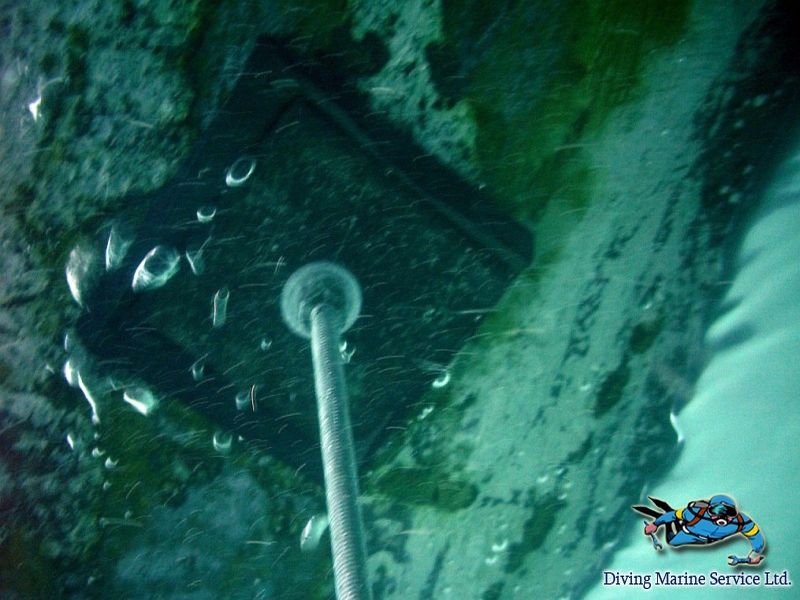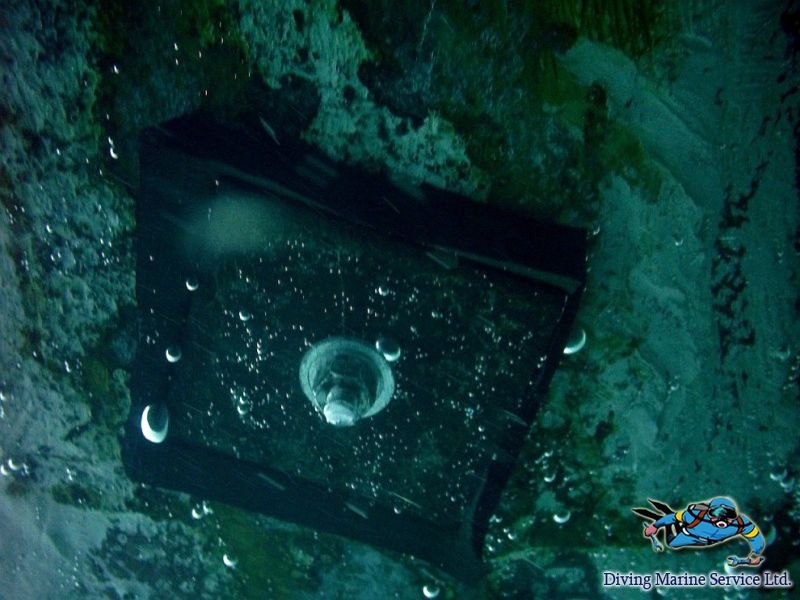Elimination of leakage without dry docking the ship
If the leakage is detected on the modern ship, undoubtedly all measures must be taken to eliminate it. Repair in dock or without docking and diving jobs – decision should be promptly made taking into account all objective circumstances.

Sometimes the leakage is dangerous not only for the carried cargo but for the ship itself and is fraught with her sinking. Ship’s water-tightness is a main parameter of her buoyancy and reliability of the service. The buoyancy depends on the state of the shell plating, bulkheads, hatch covers and other structural members. The most dangerous are the underwater holes as water can penetrate into the hull very quickly just through them.
The reasons, due to which the water-tightness can be impaired, the buoyancy is able to be decreased and which are the grounds to carry out the elimination of water leakage without docking, may be as follows:
- Occasional damages, for example damages of the shell plating when the ship runs aground;
- Damages obtained by the ship when navigating in ice and in other complicated conditions;
- Corrosion wear, violent motion, intensive vibration and as a result – change of tightness in the weld joins;
- Pit corrosion of the shell plating;
- Failure of the pipeline systems connected with the bottom and outboard fittings;
- Impacts against a berth in case of failed mooring;
- Ships’ collision.

The water leakage is eliminated in process of the scheduled repair and in conditions of the ship’s direct service , i.e. repair is carried without docking. The water leakage in underwater part of the ship hulls without docking is very important for many reasons. For example, the underwater welding and cutting permits to save the time and material resources in a considerable extent as it does not require ship’s docking. Sometimes the water leakage elimination without docking is also the only method to restore the buoyancy of the chartered ship (chartered voyages) and to observe the rule – always afloat. Besides if the ship holds are completely loaded, the exact point of leakage is practically impossible to detect without divers’ assistance. In such cases the diving jobs, underwater welding and cutting, other kinds of the appropriate jobs solve the problem of the buoyancy loss.
Depending on the intensity, character and accessibility of the leakage, its elimination can be carried out by different methods:
- imposing the tight collision mats;
- plugging;
- putting the double plates (applying the underwater welding);
- welding-on of cracks.

If there is possibility of access to the tank or other ship’s space where the water has penetrated, it is recommended to place the cement box, put the double plates or to weld-on the watertight box around the damaged area after elimination of the hull water leakage by imposing the collision mats or plugging. The mentioned structures should be removed and the hull must be properly repaired at the first ship’s dry-docking.
Latest news
- Maintenance of fish protection structures 09.05.2020
- Underwater inspection of port and offshore facilities 02.05.2020
- Hull cleaning using Brush-Kart system 18.04.2020
